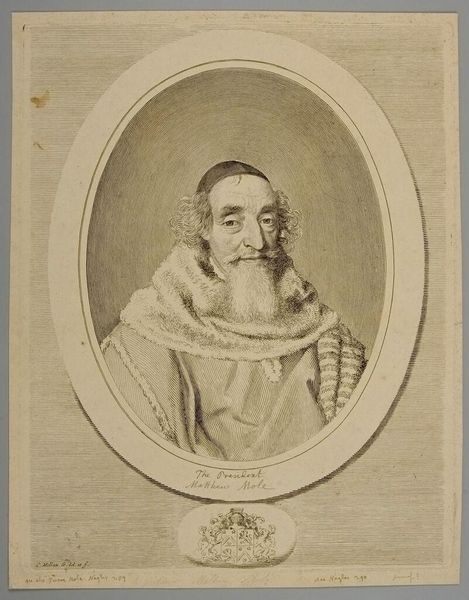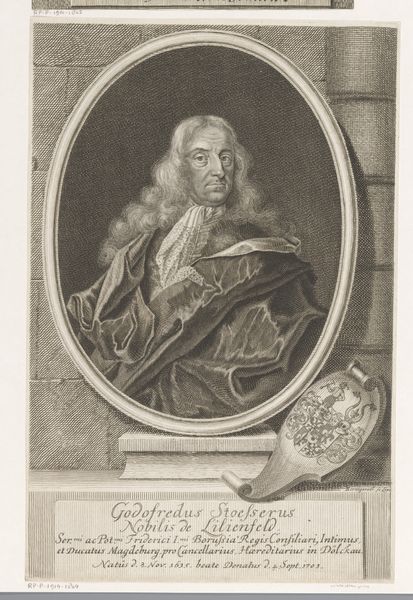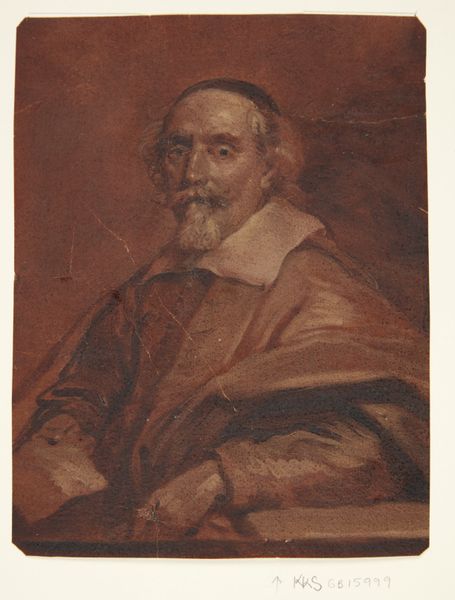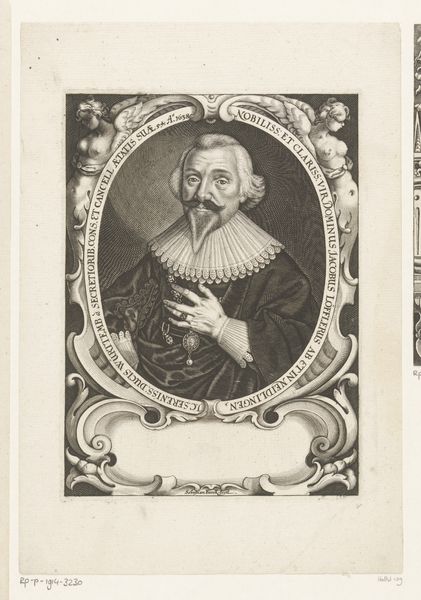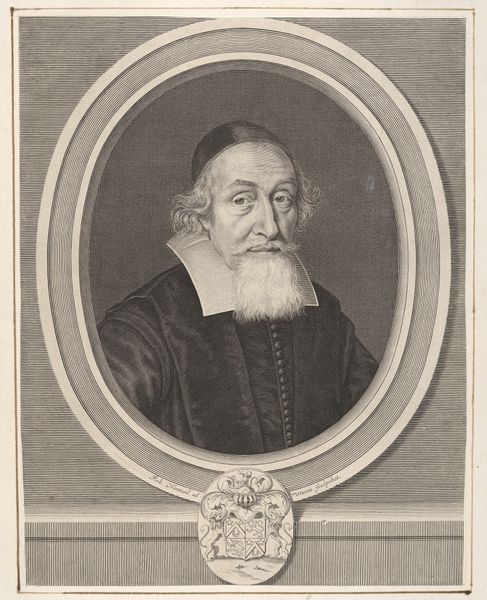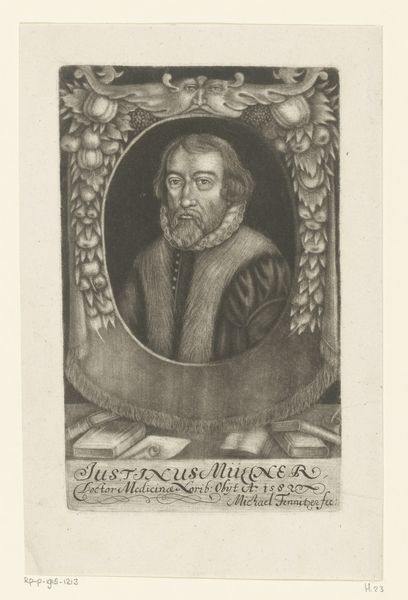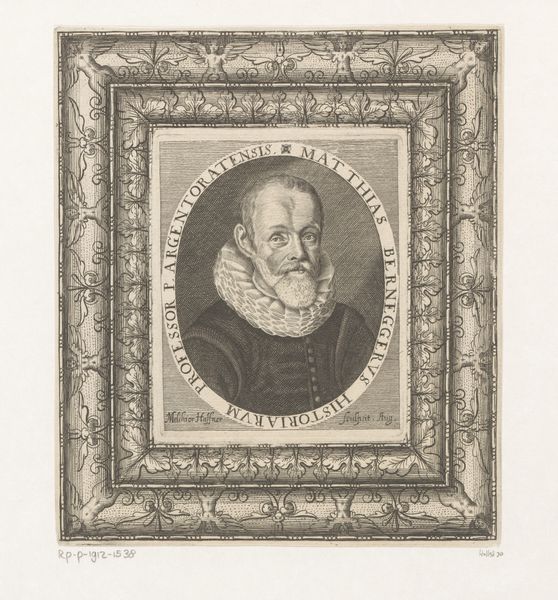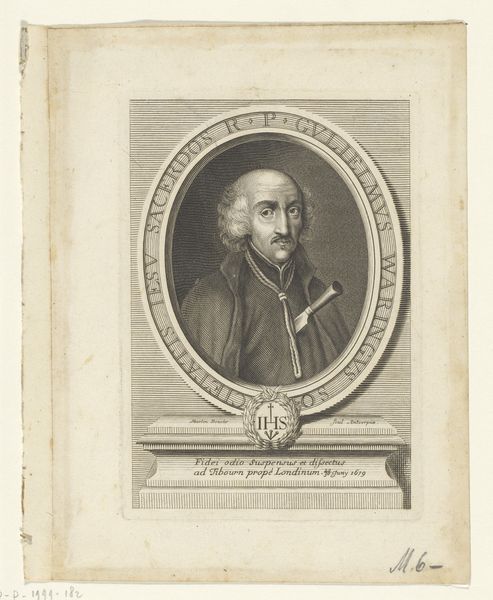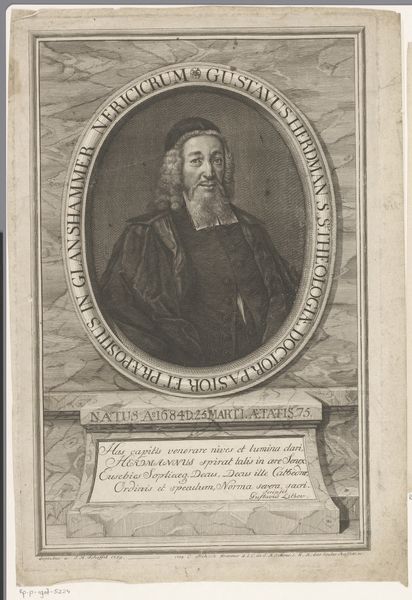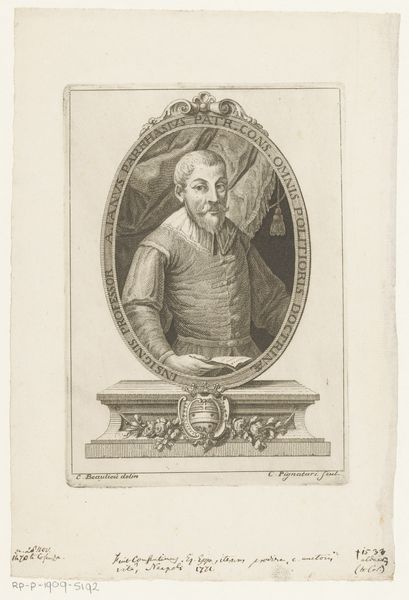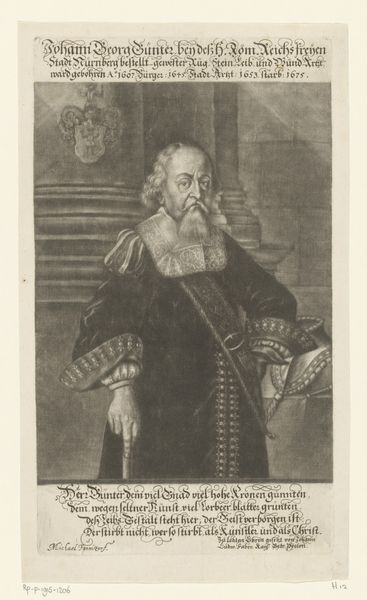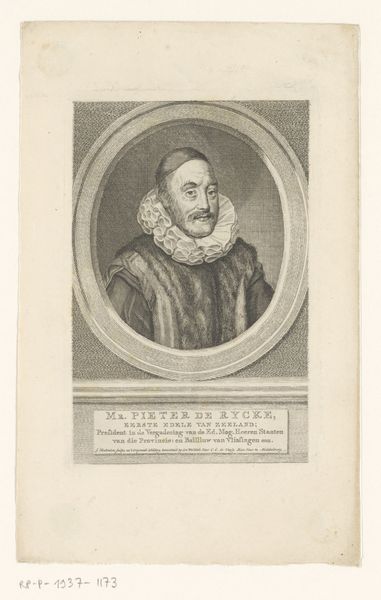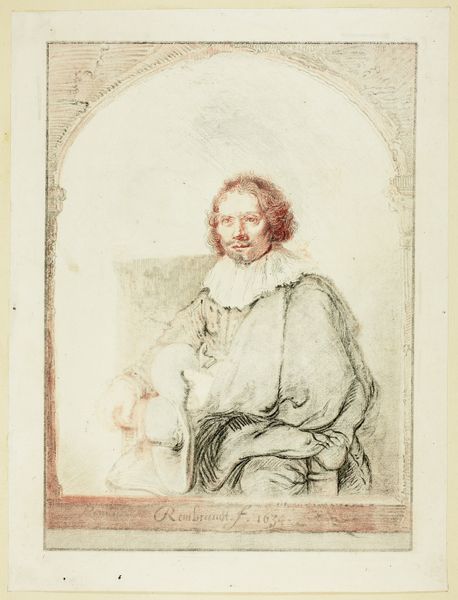
drawing, print, engraving
#
portrait
#
drawing
#
baroque
# print
#
engraving
Dimensions: sheet: 12 13/16 x 9 3/4 in. (32.5 x 24.8 cm)
Copyright: Public Domain
Editor: This is Claude Mellan's "Matthieu Molé," an engraving created sometime between 1640 and 1656. It’s striking how the textures are rendered just using line work, especially the fur collar and the beard. How does the formal composition influence your reading of the piece? Curator: Note the use of a single, continuous line to create the majority of the portrait, a technique known as a "single-line engraving." The varying thickness and density of the line dictate the light and shadow, the contours of Molé's face, and the texture of his garments. Mellan’s virtuosity is showcased in this seemingly simple yet incredibly complex network of lines. The oval frame and heraldic crest contribute to a formal structure that elevates the sitter’s status. Do you perceive how the very technique underscores themes of unity and order? Editor: I see what you mean; the unbroken line gives it a sense of wholeness. The control is amazing. Do the formal elements reflect Molé's profession, perhaps? Curator: Indeed. Molé was a prominent French magistrate, and Mellan’s formal approach undoubtedly speaks to Molé's position and the gravity associated with it. Consider how the clarity and precision of the engraving echo the qualities one might expect of a just and rational legal mind. The composition isn't merely decorative, but rather contributes to the work's overall meaning and purpose. Editor: So, the artwork really isn’t just a portrait; it uses form to communicate ideas about Molé’s character and social standing. Curator: Precisely. Through Mellan's skilled manipulation of line and form, "Matthieu Molé" transcends a simple likeness and becomes a testament to the power of formal artistic choices to convey meaning. Editor: I've definitely learned to look closer and consider all aspects.
Comments
No comments
Be the first to comment and join the conversation on the ultimate creative platform.
